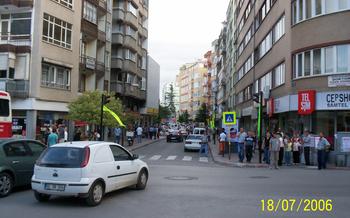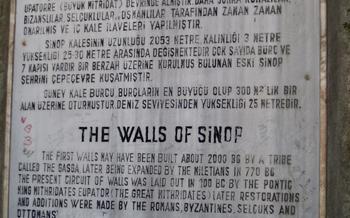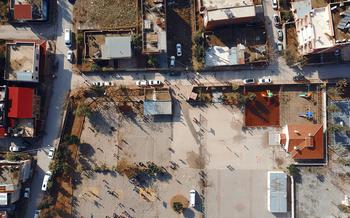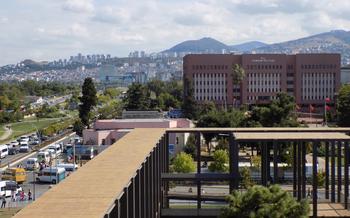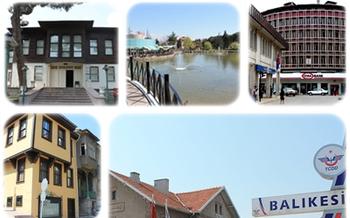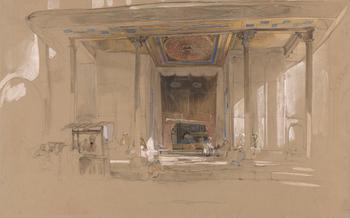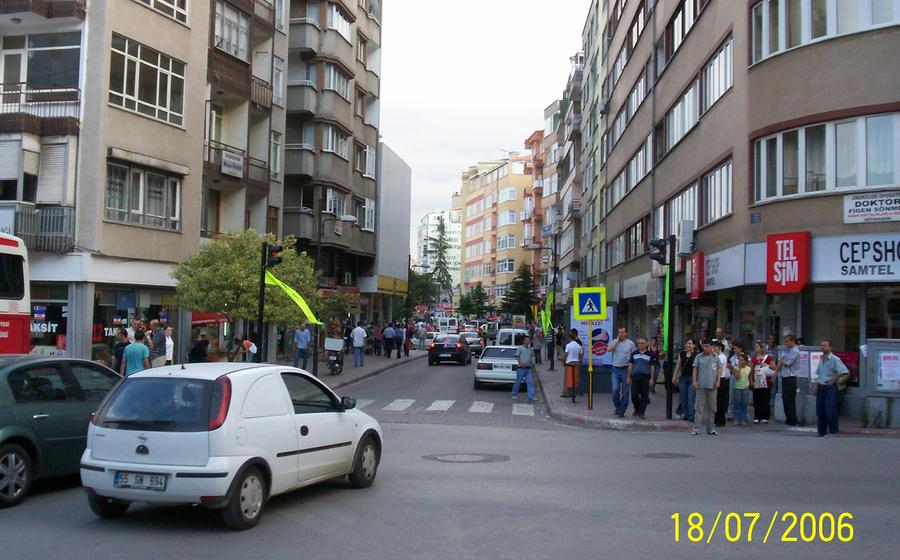
Kümbet Mosque
- Historical Significance
- Architectural Marvel
- Prayer and Worship
- Local Culture and Traditions
- Religious Significance
- Restoration and Preservation:
- Surrounding Attractions:
- Photography Tips
- Accessibility
- Local Guides and Tours
- Interactive Displays and Exhibitions
- Local Crafts and Souvenirs
- Respectful Behavior
- Insider Tip: Unveiling the Hidden Gem of the Mosque's Courtyard
Historical Significance
The Kümbet Mosque stands as a testament to the rich history and cultural significance of Samsun, Turkey. Built in the 16th century during the Ottoman Empire, it played a pivotal role in the development of the city as a center of Islamic learning and worship. The mosque's unique architectural style, blending Seljuk and Ottoman influences, distinguishes it from other mosques in the region, making it a valuable example of Turkish Islamic architecture. Throughout its existence, the Kümbet Mosque has witnessed pivotal events and hosted notable figures, contributing to its profound historical significance.
Architectural Marvel
The Kümbet Mosque stands as a testament to the architectural prowess of the Seljuk era. Its stunning design showcases a harmonious blend of intricate carvings, tilework, and calligraphy that adorns both its interior and exterior. The mosque's exterior is characterized by its distinctive cylindrical shape, surmounted by a conical dome. The dome, adorned with intricate geometric patterns in shades of turquoise and blue, creates a striking visual contrast against the warm stone facade. The mosque's entrance is flanked by two slender minarets, each featuring a spiral staircase that leads to the muezzin's balcony.
The interior of the mosque is equally captivating, with its spacious prayer hall adorned with beautiful tilework and calligraphy. The qibla wall, facing the direction of Mecca, is the focal point of the prayer hall and features a mihrab, a niche that indicates the direction of prayer. The mihrab is intricately carved with floral and geometric motifs, creating a mesmerizing visual display. The mosque's interior is bathed in soft, diffused light that filters through the stained glass windows, adding to the serene and spiritual atmosphere of the space.
The Kümbet Mosque's architectural elements are not merely decorative but also hold symbolic and functional significance. The dome, representing the heavens, serves as a reminder of the connection between the earthly and the divine. The minarets, acting as celestial beacons, symbolize the call to prayer and the presence of God. The intricate carvings and calligraphy, often featuring verses from the Quran, serve as a reminder of the mosque's religious significance and its role as a place of worship and contemplation.
Prayer and Worship
The Kümbet Mosque holds immense religious significance for Muslims in Samsun, serving as a central place of worship and spiritual connection. The daily prayer rituals, including the five obligatory prayers, are performed with devotion and reverence by worshippers who gather in the mosque's spacious prayer hall. The call to prayer, known as the adhan, echoes through the neighborhood, inviting the faithful to join in the collective worship. During special religious events and festivals, such as Ramadan and Eid, the mosque comes alive with a festive atmosphere, as worshippers come together to celebrate and seek blessings. The sense of community and spiritual connection experienced at the Kümbet Mosque is palpable, fostering a deep bond among the worshippers and reinforcing the mosque's role as a vital spiritual center in Samsun.
Local Culture and Traditions
The Kümbet Mosque holds a profound significance in the local culture and traditions of Samsun. It serves as a central gathering place for community events, celebrations, and religious teachings. During religious festivals such as Ramadan and Eid, the mosque becomes a hub of festivities, with special prayers, communal meals, and vibrant decorations. Locals gather at the mosque to share in these celebrations, fostering a sense of unity and togetherness.
Furthermore, the mosque serves as a venue for religious teachings and spiritual guidance. Local scholars and imams conduct regular classes and lectures on Islamic teachings, attracting students and seekers of knowledge from all walks of life. These teachings contribute to the preservation and transmission of Islamic traditions and values within the community.
The Kümbet Mosque has also become a symbol of cultural heritage and identity for the people of Samsun. Its unique architectural features and historical significance have made it a point of pride and a reminder of their rich cultural past. The mosque's presence in the heart of the city serves as a testament to the enduring legacy of Islamic architecture and the deep-rooted faith of the local community.
Religious Significance
The Kümbet Mosque holds immense religious significance for Muslims in Turkey. It is considered a sacred site and a place of pilgrimage for many devout Muslims. The mosque is believed to contain the tomb of Imam Ali al-Hadi, a revered figure in Shia Islam, which attracts numerous pilgrims and visitors seeking blessings and spiritual guidance. The mosque's status as a pilgrimage site adds to its religious importance, making it a focal point of devotion and spiritual connection for Muslims across the region. Visitors can witness the fervor and piety of worshippers engaged in prayer and religious rituals, creating a deeply spiritual and reverent atmosphere within the mosque.
Restoration and Preservation:
The Kümbet Mosque has undergone several restoration projects throughout its history to preserve its architectural integrity and ensure its continued use as a place of worship. In the 19th century, extensive repairs were carried out to address structural issues and maintain the mosque's original appearance. During the 20th century, further restoration efforts focused on restoring the mosque's intricate tilework and calligraphy, which had deteriorated over time. In recent years, a comprehensive restoration project was undertaken to address the mosque's structural stability, reinforce its foundations, and restore its interior and exterior decorative elements. These efforts have been crucial in preserving the mosque's historical and cultural significance for future generations.
Surrounding Attractions:
The Kümbet Mosque is nestled in the heart of Samsun, surrounded by a wealth of historical, cultural, and natural attractions that visitors can explore. Just a short walk from the mosque lies the Samsun Museum, which houses a fascinating collection of artifacts and exhibits showcasing the region's rich history and cultural heritage. Visitors can delve into the ancient past at the Samsun Archaeological Museum, where they can admire relics from civilizations that once thrived in this region.
For those seeking a scenic retreat, the picturesque Amisos Hill National Park offers breathtaking views of the Black Sea and the surrounding landscapes. Nature enthusiasts can embark on hiking trails, enjoy picnics amidst lush greenery, or simply soak in the tranquility of the park's natural beauty.
To experience the vibrant local culture, visitors can head to the bustling Samsun Bazaar, where they can browse a myriad of stalls selling traditional Turkish handicrafts, spices, and delicacies. The bazaar is a hub of activity, offering a glimpse into the daily life of Samsun's residents and providing an opportunity to interact with the friendly locals.
Combining a visit to the Kümbet Mosque with these surrounding attractions allows visitors to immerse themselves in the rich tapestry of Samsun's history, culture, and natural beauty, creating a truly unforgettable travel experience.
Photography Tips
The Kümbet Mosque offers a wealth of opportunities for stunning photography, with its intricate details, vibrant colors, and unique architectural features. To capture the best shots, consider the following tips:
-
Golden Hour Magic: Plan your visit during the golden hour, just after sunrise or before sunset, when the warm, diffused light casts a magical glow on the mosque's exterior, creating a picturesque backdrop for your photos.
-
Play with Angles: Experiment with different angles and perspectives to showcase the mosque's grandeur. Capture wide shots to capture the entire structure, as well as close-ups to highlight intricate details like the tilework or calligraphy.
-
Seek Symmetry: The mosque's symmetrical architecture offers pleasing compositions. Position yourself in front of the mosque to capture the perfect symmetry of the dome, minaret, and prayer hall.
-
Interior Beauty: Step inside the mosque to capture the serene atmosphere and intricate interior. Focus on the intricate carvings, colorful tiles, and stunning chandeliers that adorn the prayer hall.
-
Respect the Sacred: Be mindful of the religious significance of the mosque and avoid taking pictures that may be disrespectful or disruptive to worshippers. Always ask permission before photographing people, especially during prayer times.
Accessibility
The Kümbet Mosque is committed to providing an accessible and inclusive experience for visitors with disabilities. The mosque features ramps and elevators to ensure that all areas are accessible to wheelchair users, including the prayer hall and ablution facilities. Designated parking areas are also available close to the mosque's entrance for the convenience of visitors with mobility limitations. Mosque staff and volunteers are always willing to assist visitors with disabilities, providing guidance and support to ensure a safe and enjoyable visit. For visitors who are unable to climb stairs, alternative arrangements can be made to facilitate access to the mosque's upper levels. With these accessibility features in place, the Kümbet Mosque welcomes visitors of all abilities to come and experience the beauty and spirituality of this sacred site.
Local Guides and Tours
Hiring a local guide or joining a guided tour can greatly enhance your experience at the Kümbet Mosque. These knowledgeable professionals can provide in-depth insights into the mosque's history, architecture, and religious significance, bringing its story to life. Various tour options are available, catering to different interests and preferences. Historical walks offer a comprehensive overview of the mosque's past, while architectural tours focus on its unique design and construction. Religious tours delve into the spiritual significance of the mosque and its role in the local Muslim community.
To ensure a seamless experience, consider booking your guide or tour in advance. Local guides are typically licensed and regulated, ensuring their expertise and professionalism. They can customize the tour to your specific interests and pace, allowing you to make the most of your visit. Whether you're a history buff, an architecture enthusiast, or simply seeking a deeper understanding of Islam, a guided tour will provide valuable insights and a memorable experience.
Interactive Displays and Exhibitions
The Kümbet Mosque offers visitors a unique opportunity to engage with its history and significance through interactive displays and exhibitions. These displays utilize modern technology to create an immersive experience that brings the mosque's past to life. Visitors can learn about the mosque's architectural features, religious significance, and cultural impact through interactive touchscreens, multimedia presentations, and virtual reality experiences.
These interactive elements are designed to appeal to visitors of all ages and backgrounds, making the mosque an educational and enjoyable destination for everyone. Whether you're interested in history, architecture, or religion, you'll find something to captivate your attention at the Kümbet Mosque's interactive displays and exhibitions.
Local Crafts and Souvenirs
When visiting the Kümbet Mosque and its surroundings, visitors have the opportunity to purchase unique local crafts and souvenirs that serve as tangible reminders of their journey. These items often showcase the artistry and traditions of the region and hold deep cultural significance.
One popular souvenir is the intricately designed prayer rug, adorned with vibrant patterns and religious motifs. These rugs are handcrafted with care, symbolizing the devotion and spirituality associated with the mosque. Visitors can also find beautifully crafted calligraphy pieces, featuring verses from the Quran or the names of Allah and the Prophet Muhammad. These pieces serve as a reminder of the mosque's religious significance and are often displayed in homes as a symbol of faith.
For those who appreciate traditional handicrafts, the Kümbet Mosque area is renowned for its exquisite pottery. Local artisans create a variety of ceramic pieces, including decorative plates, vases, and tiles, often adorned with intricate patterns and vibrant colors. These items showcase the region's rich pottery tradition and make for unique souvenirs that capture the essence of Turkish craftsmanship.
In addition, visitors can find a variety of other local crafts and souvenirs, such as handwoven textiles, intricate jewelry, and traditional musical instruments. Whether seeking a meaningful memento or a thoughtful gift, these items offer a taste of the local culture and help support the livelihoods of local artisans.
Respectful Behavior
When visiting the Kümbet Mosque, respectful behavior and etiquette are of utmost importance, especially for non-Muslim visitors. As a sign of respect, visitors should dress appropriately by covering their shoulders and knees. Upon entering the prayer hall, it is customary to remove shoes and maintain silence to avoid disturbing worshippers during prayer times. It is also important to be mindful of local customs and traditions, such as avoiding pointing your feet towards people or objects considered sacred. By observing these simple guidelines, visitors can ensure a positive and welcoming experience for themselves and others, fostering mutual understanding and respect.
Insider Tip: Unveiling the Hidden Gem of the Mosque's Courtyard
As you explore the stunning Kümbet Mosque, take a moment to venture into its serene courtyard, a hidden gem that often goes unnoticed by visitors. Amidst the tranquil ambiance of the courtyard, discover a centuries-old fountain, its intricate carvings whispering tales of the mosque's rich history. Locals believe that drinking from this fountain brings good fortune and blessings. Capture the essence of this sacred space, where the gentle sound of water creates a soothing symphony, inviting you to pause and reflect on the mosque's enduring legacy.
